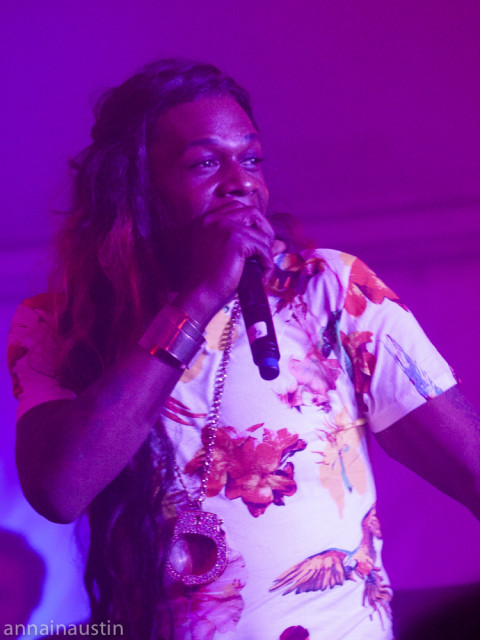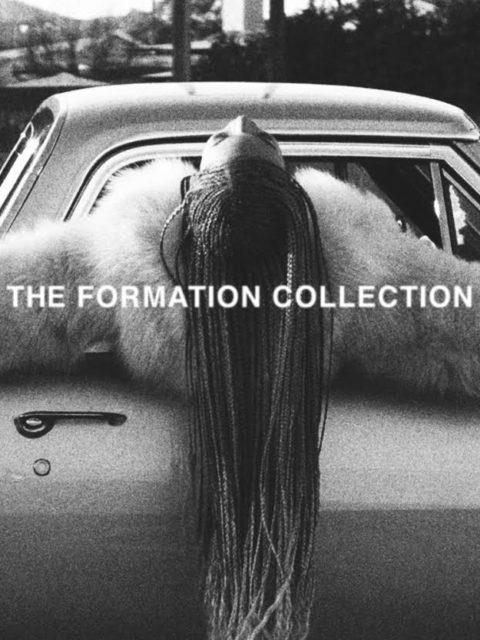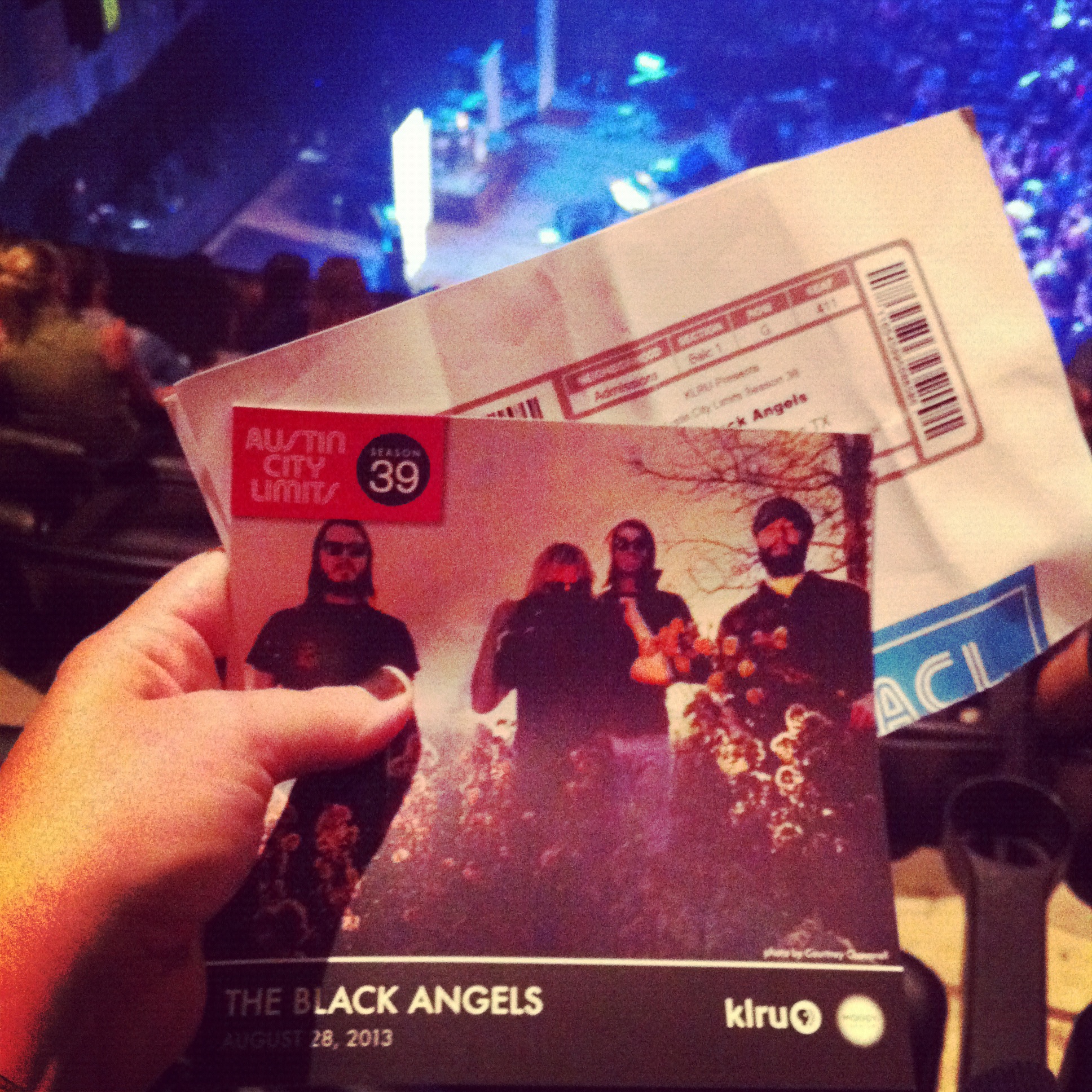“What happened at the New Wil’ins?”: Cultural and Historical (Re)Construction in Beyoncé’s “Formation” videos
I am proud to present an unusual take on Beyonce’s “Formation” video: an academic close-reading of the video by independent scholar and guest blogger Byron King:
“What happened at the New Wil’ins?”: Cultural and Historical (Re)Construction in Beyoncé’s “Formation” videos
“What happened at the New Wil’ins?” Except as the furtive hook leading to an alcohol-fueled, debauched digression of events at a Mardi Gras celebration, this question, offers a strange, and given recent history, ominous commencement to a trendy pop song. And when such lyrics are paired with a video depicting a throaty-voiced Beyoncé perched precariously atop a New Orleans Police cruiser on a flooded street, it soon becomes obvious that we have left the safely ephemeral and overly personal confines of her 2013 self-titled album, Beyoncé.
Because of her tendency towards offering more trendy and self-referential music, most reviewers of Beyoncé’s new music video, “Formation,” have typically critiqued it from various topically socio-cultural, narrowly political, or intimately personal perspectives. And given various lyrics (such as her dismissive reference to conspiratorial theories of her association with “illuminati” groups, or her wearing Givenchy clothing in various ads) and visual presentations the piece offers, such critiques are both just and inevitable.
However, when one views this video together with the Super Bowl 50 Halftime Show, wherein she reprises many of the themes and motifs from the song and augments them with a far more programmatic (and for many Americans, a far more problematic) political reference, that of the Black Panthers, it becomes evident, after a close critical analysis, that Beyoncé is not merely offering a catchy, but topically “bubble-gum” critique of modern American society. More momentously, rather, she is presenting an aesthetically enticing and deftly woven, but carefully considered, politically explosive program for African-American empowerment that, although many don’t fully understand it, renders the power elite, together with many whites, uneasy.
Understanding Knowles-Carter’s extended critique first requires that one properly situate it socially, politically, culturally, and historically–looking around, I have found few discussions of the videos’ historical significance.
A Personal Take:
The title, “Formation,” of course, quite obviously references Beyoncé’s cultural and personal genealogical milieu, as it clearly references both her own biographical history as the Houston-born daughter of Celestine Ann and Mathew Knowles. Her father was from Alabama, and her mother was a Creole woman from Louisiana (who is ultimately descended from the French Acadian leader, Joseph Broussard.) “Formation” proudly references her parentage in its second stanza saying, “My daddy Alabama, Momma Louisiana/ You mix that negro with that Creole make a Texas bama.” Beyoncé, thus, is the Texas (Houston)-born daughter of an Alabaman (rural) “negro,” and a racially mixed “Creole” woman. This cultural mixture makes her “bama,” (that is both literally from Alabama, but also, based on early twentieth century Black slang, a “sartorial or cultural misfit” (as urban Blacks often viewed rural ones from places such as Alabama as unrefined or unsophisticated.)
She references this pride in her misfit “countryness” in her lyrics singing, “Earned all this money but they never take the country out me/ I got hot sauce in my bag, swag.” She may have risen in economic status, but she has refused to lose her proud connection to her rural forbearers. It is a cultural truism that Blacks, especially rural ones, garnish most of their cooking with hot sauce. It is also upon this distinction as an outcast, and especially a sartorial one, and the fact that the gay, transvestite New Orleannais singer, Big Freedia, provides vocals for the track, that may reviewers rightly adorn their pro-LGBTQ critiques of the song and video.
Big Freedia at the Stargayzer Festival in Austin, Texas in 2014
Moreover, her personal biographical pride and history expresses itself in the video, through her lyrics, when she announces with both maternal and racial pride that “I like my baby hair with baby hair and afros/ I like my negro nose with Jackson Five nostrils.” This proud cultural attachment is reproduced visually in the video when she presents her own daughter, Blue Ivy, standing between two other Black children, all in white dresses with large afros. This pride is underlined by the fact that until the late 1960s to the early 1970s in Black communities, wearing more “natural” hairstyles, such as afros, was generally frowned upon. Additionally, a number of Black entertainers, like Michael and Janet Jackson, had plastic surgery at various points during their careers to reduce their large, bulbous noses, a feature characteristic of many American Blacks, as it highlighted the wearer’s racial difference from the more Caucasian-centric standards of beauty.
But Knowles-Carter’s title also announces her attachment to a more culturally-specific practice in the African-American community in the South: that of the band formation. Unlike in general American society, wherein halftime shows during sporting events are generally regarded as after-thoughts, mere trivial distractions which simply entertained spectators while the players rest. In many African-American communities, especially in the South, halftime shows represent important social rituals where the various schools and communities celebrate, often extravagantly, their own culture and distinctiveness. In these shows, the communities often take great pains to show racial, cultural, and even personal pride in ways that are not always acceptable in the larger community. For this reason, they are often a locus æmenus, a refuge, for individuals and groups willing to engage in (otherwise unpermitted) flamboyant acts of self-display. For this reason they represent cultural safe-havens for many in the Black LGBTQ community. The video, not only overflows with repeated homages to a number of these sort of outrageous band formations throughout, a practice which has found a wider cultural acceptance in New Orleans and South Louisiana, but Beyoncé’s own chorus line constantly references this tradition.
Still further, the fact that she reprises the song as the basis of her own Super Bowl Halftime Show draws emphatic attention to the band formation and its elevated status in Southern African-American tradition. In essence, she hijacks the Super Bowl, not only figuratively insinuating into it an African-American tradition, but she does so literally by overshadowing the white performers, the band, “Coldplay,” who preceded her. She also in many respects overshadows the significance of the game itself, which is often viewed as a highlight of conservative, middle-American white culture, by offering a strenuously political message which is very much at odds with the white supremacy hiding at the heart of this culture. She and her backup dancers dress in costumes evocative of the radical 1970’s Black empowerment group, “The Black Panthers.” In the 1970s their mission was to oppose the rampant police brutality in urban settings and offer programs for social and economic self-empowerment in the Black community. On account of their willingness to aggressively counter the politically-sanctioned violence of the police, many whites regarded (and still regard) them as a terrorist group. Many urban Blacks disagree, seeing them instead as courageous freedom fighters.
Taken together with Beyoncé’s clear championing of the social and legal challenges to the establishment of groups like the Black Lives Movement (BLM) against the vicious and often unpunished atrocities perpetuated by police organizations against (mostly Black) communities and individuals (shown visually both by having a young Black teenager dance in front of a formation of police officers in riot gear) and other groups who decried the Federal and local governments’ atrocious (some would cry racist) mishandling of the Katrina disaster. (The video both begins and ends in New Orleans with the singer on top of a police cruiser in a flooded street.) Throughout the video, one also witnesses clear references to Martin Luther King and the 1950’s and 1960’s Black Civil Rights struggle. She is being clearly and unabashedly political in her open support of a number of different movements for Black social and political liberation. Perhaps, this facet of the video troubles many whites, just as it emboldens and gladdens many Blacks.
But Knowles-Carter’s pride in her personal negritude and her support of various political and social movements is not nearly as topical and haphazard as many of her critics might think. For if one observes her dual performances with a historically critical eye, it becomes clear how ideologically consistent and programmatically designed the vision that her entwined performances is. What many reviewers fail to notice is how radical and thorough-going her critique of the dominant racial and cultural power structures is. This twin-headed performance of “Formation” represents not merely an ephemeral construction of Beyoncé’s personal and cultural status (as most reviewers would argue.) Rather, it represents a historicized “re-construction” of the entire (Southern) American political and social order, a reconstruction which mirrors and even completes the failed and unfinished American Reconstruction in the final years of the American Civil War and the decade thereafter.
Thinking about “Formation” vis-a-vis American Reconstruction:
In his 1988 magisterial reinterpretation of the little studied, and often wrongly interpreted, period of Reconstruction after the Civil War, “Reconstruction: America’s Unfinished Revolution, 1863-1877” the preeminent scholar, Eric Foner, accomplishes a critical tour-de-force that practically redraws the critical map for Reconstruction studies. The ideological basis of this reinterpretation is both simple and profound: up to that point, the era had been dominated by the “Dunning School” of criticism, which either ignored the Black freedmen’s desires and struggle for personal, political, and economic independence in the wake of the war and Emancipation, and instead subsumed these desires, marking Blacks as mere pawns in the sectional struggle between Northerners intent on getting rich on the weakened conditions of the Southerners and focusing instead on the ultimately successful struggle of white Southerners to overcome the devastations of the War and to reestablish themselves as the preeminent social, political, and economic force in the region.
Bolstered by Marxist critiques of elite historiography and a re-evaluation of long-assumed racial priorities fostered by the success of the Black struggle for civil rights, Foner shifts the focus of Reconstruction studies from the machinations of the various groups and classes of whites to regard the era as centrally a struggle to secure not merely emancipation of enslaved Blacks, but as a struggle, waged primarily by Blacks and for Blacks to secure their proper social and economic status in American society.
This shift was monumental, not only because it finally included Blacks as rationally self-interested actors in political interpretations of the period, but especially, because it saw these actions and desires as the central stage for determining the success and steering the course of Reconstruction studies. Reconstruction, according to Foner and many historians after him, was no longer a baleful discussion of poor Southern whites’ attempt to “redeem,” themselves from the terribly unfair and melodramatic burden of military failure and economic and social predation by both external “Carpetbaggers” and internal traitors, the “Scallywags.”
Having reoriented history’s gaze, Foner then systematically outlines the Freedmen’s ultimately frustrated struggle to achieve four basic social, political and economic goals: (1) the reformation, reintegration, and stabilization of the fragmented Black family unit; (2) the establishment of communities which were safe from arbitrary and racist white violence; (3) the establishment of a generalized system of Black political and social empowerment; and finally, (4) the implementation of a fair economic system which would allow Blacks to earn their fair share and grow as economic equals to whites. Foner identifies this later with as the “free labor” ideology offered by many Northerners as the substitute for slavery.
More than this, Foner establishes the limits of his study (i.e. 1863-1877) based around several important events: Firstly, 1863 was, in addition to being the year of promulgation of the Emancipation Proclamation, the beginning of the attempt by the Union to begin a system of paid (but compulsory) labor by Freed Blacks in Louisiana, a system which Union generals believed would terminate in a fair and equitable system of voluntary paid work among Blacks. (New Orleans had been conquered early in the War.) And finally, 1877 represents the date when Union troops were finally removed from the South, leaving these former Confederate States free to impose local and discriminatory labor and political reforms on their nominally free Black populations.
Whether Bey read or knew of Foner’s reappraisal of traditional Reconstruction studies when she formulated her song and the accompanying performances is unknown (and perhaps unlikely.) However, like Foner’s critical re-orientation, “Formation” refuses to offer itself as a trinket to be easily devoured by the White Cultural Imagination. Despite the complaints of some whites and a number of police organizations, the song and connected performances are not anti-white or even anti-cop. They are, however, stridently pro-Black. They emphatically resist cultural co-option and white cultural appropriation by speaking almost exclusively for and to African-American audiences.
The Day Beyoncé Became Black:
Most popular music, even that written by Black artists, usually can be co-opted by the dominant cultural group by simply ignoring the racially or ethnically specific details presented and casting instead whites in the roles and situations imaginatively offered. “Formation,” however, cannot easily be re-written in this way. Too much of its content is irreducibly a product of and targeted to African-American consumption. The recondite negritude inherent in the video is so evident, and potentially threatening to white musical sensibilities, that Saturday Night Live uses it in their extremely humorous satire discussing the song’s initial social impact entitled, “The Day Beyoncé Became Black.”
At the 57 sec mark of the skit, cast member, Bobby Moynihan’s character stands up slowly from his office cubicle with earbuds in his hand, and in a half-terrified/half-quizzical query gives voice to a horrifying epiphany concluding: “Maybe this song isn’t for us?” To this question, a clearly mortified Vanessa Bayer responds hysterically, “But usually everything is!” The following scene shifts to an outside shot showing a city in civil chaos, with whites running or hiding in terror, while Black characters walk around casually wondering what has happened. This SNL skit has perfectly, if satirically, captured the momentous shift in cultural paradigms the song represents. Like Foner, Knowles-Carter has, for the duration of the song and attached performances at least, deliberately, and inalterably, refocused the typical cultural gaze of her work.
But this reorientation is not the only challenge to the status quo that “Formation” presents to its viewers. The fact that she situates her sardonic commentary of America’s modern racial conflagration in the exact same location that gave rise to the beginnings of the first real attempt to construct a post-slavery movement for Black empowerment is, I think, not circumstantial. For in addition to being the physical nursery for the movement, New Orleans possessed, as it still does today, a unique socio-cultural environment that would allow it to lead the way in the Black power struggle: even before the War, it possessed the largest educated free Black society (the Creoles) who lived next, to and often in tandem with, a still larger enslaved Black society, (the negroes.)
Reconstruction and the Black Family/Community:
Knowles-Carter’s proud enunciation of her personal genealogy dovetails quite neatly with the particulars of the 10 Percent Plan President Lincoln had Gen. Nathaniel P. Banks establish in occupied South Louisiana in December of 1863. According to this very lenient early plan for Reconstruction, once ten percent of a rebel state’s population signed a loyalty oath and abolished slavery, it could then “adopt temporary measures regarding blacks consistent […] with their present condition as a laboring, landless, and homeless class. Such a government would be then entitled to representation in Washington” (Foner, 35-36.) In Louisiana, this meant trying to enlist the Creole population to lead the enslaved populations and trying to convince the latter to stay put in the countryside as a rural serf population. Lincoln wanted, in Beyoncé’s terms, to keep the Blacks “bama,” i.e. rural, landless, and at least temporarily politically “unfit” for self-determination. Thus, both sides of Bey’s ancestry occupied very divergent, but very central, roles in the new regime.
But if Lincolnian Reconstruction intended to keep Blacks on the farm, [Banks enacted stringent regulations requiring a system of passes for Blacks who wished to wander from the countryside into the towns,] the system, nevertheless, quickly broke down under the weight of the newly enfranchised Blacks who still streamed towards towns, often in search of sold or lost family members. Blacks had begun the process, which would ultimately last over a decade across the South, and eventually the entire country, of trying desperately to reform and reintegrate their scattered families.
Beyoncé, too, echoes this foundational desire to stabilize the Black family in “Formation.” She not only evokes her parents and fractured ancestral lineage, she deliberately includes her own daughter in her video and raises an encomium to the beauty inherent in Black families and in Blackness as a whole. She, both figuratively and literally, succeeds at bringing together and glorying in both the Black family’s fragmented past and its hopeful and united future.
But an integral family neither was, nor is sufficient. Both Knowles-Carter and her forbearers under Reconstruction wanted to create a community in which it was reasonably safe to rear children and avoid the arbitrary and racist violence too common in American society. Ultimately, Black Reconstructionists would fail in this endeavor, but while Federal troops occupied Louisiana, and the South in general, Blacks were not shy in evoking their assistance (many of whom were also Black themselves) and especially the Freedman’s Bureau, so hated by Southern whites as it often prevented them from enacting historically arbitrary vengeance on any Black who asserted himself. Eventually, of course, both the troops and the woefully underfunded Bureau [it was never given a federal budget,] would pull up stakes and leave Blacks to the vicious mercy of armed and angry Southern whites.
Bey argues strenuously for the need for a safe Black community and the failures of a heedless Federal government which would allow Blacks to be inundated (literally) and killed. Instead of the rampaging, state-sanctioned terrorism of hooded Klansmen, she rages against the epidemic of state-sanctioned terrorism of police brutally murdering Black youths without legal or real social consequence. The white hood has given way to clear plastic helmets. But the argument remains exactly the same. And the shameful insouciance of the Federal and State’s (lack of) response to Hurricane Katrina reproduces the horrors of Black death reminiscent of the end of Reconstruction. The NOPD was particular notorious on this account, and even today various indictments against them remain under investigation or litigation. At the end of “Formation,” Beyoncé’s character, trapped on top of the police cruiser, is drowned by the rising flood. She has no where to go. She is trapped between the violence and potential death that the cruiser represents and the ineluctable and certain death that white supremacy and a lack of governmental concern for the plight of Blacks forebodes.
Concerning the police:
Thus, the song evokes yet another type of “formation” that has been important to the Black experience in America: the military, or police “formations” which have been used to round up, suppress, or oppress Blacks since the days of slavery, especially in the South. The violence of police formations are clearly signaled in the “Formation” video when it shows the young Black teen dancing before the police line arrayed in riot gear. She echoes the age-old cry of Black mothers begging that the state-sanctioned terrorism represented by the police should spare their children. As such it is a clear nod of agreement with the goals of the recent civil rights protests lead by various Black Lives Matter groups.
Such a nod might be regarded as fairly commonplace and even lukewarm (it is hard in the African-American experience to deny the brutal reality of oppressive police violence, even as such reality remains hotly debated in mainstream white culture,) except when Beyoncé’s Super Bowl performance directly addresses this issue when she and her backup dancers sport outfits reminiscent of the militant uniforms worn by many members of the Black Panther Party in the early 1970s. In this manner Bey sartorially aligns herself with at least the goals of that era’s militant Black nationalism, and especially its aggressive willingness to oppose militarily the urban police brutality against the Black community. She, thus offers the positive (to Blacks at least) image of the urban freedom fighter willing to organize and defend themselves against systemic oppression.
By invoking this Stokely Carmichael-inspired challenge not only to the dictates of white supremacy, but also to the pacifistic means expounded by MLK and much of the Christo-centric 1960’s brand of civil rights struggle, Bey, thus, allies herself with the means and goals of the loosely-defined Black Power movement of the 1970s which, rejecting the previous era’s insistence on the use of moral suasion and ethical appeals to confront racial oppression as weak and pandering, employed instead often more aggressively martial and separatist tactics to address this evil.
Taking it to the bank:
Beyoncé, in this way, stakes her place clearly in the perennial struggle for the third goal of Black Reconstruction: the establishment of a generalized system of Black political and social empowerment. While I seriously doubt, she would argue for an absolute racial separatism in the vein of Marcus Garvey, (or Lincoln, who championed the American Colonization Society and its ultimately successful attempt to resettle colonies of American Blacks in Liberia,) Bey certainly argues for a greater degree of racial economic and cultural self-sufficiency than many whites would feel is necessary for “Black empowerment.”
I think many reviewers have missed, glossed over, or even misread the degree to which Knowles-Carter champions cultural and economic self-sufficiency in “Formation,” (mis)reading it instead as a gross act of cultural and economic exploitation, (cf. Shantrelle Lewis’ article, ‘“Formation” Exploits New Orleans’ Trauma’. In “Formation” Bey strongly advocates a pro-capitalist ethic as a means of personal and racial uplift.
She begins her advocacy by defending herself (almost innocently) against the charge that her fortune has disconnected her from her cultural heritage. She claims: “[I] Earned all this money but they never take the country out me/I got a hot sauce in my bag, swag.” She may be rich, but she remains integrally a Southern Black woman.
Moreover, this wealth allows her the social freedom to act in ways that others aren’t allowed to do. Infamously, (and cheekily) she boasts:
When he fuck me good I take his ass to Red Lobster, ’cause I slay.
If he hit it right, I might take him on a flight on my chopper, ’cause I slay.
Drop him off at the mall, let him buy some J’s, let him shop up, ’cause I slay.
Her “countryness” not withstanding, she has real access to economic resources, which, if properly stimulated, can also help others in the community:
I might get your song played on the radio station, ’cause I slay. (I might get your song played on the radio station, ’cause I slay.)
She starts by demonstrating her access to her own music industry, and with the powerful artist-producer, Jay Z as her husband, this access is considerable. She then broadens her boasts to include her access to entrepreneurial capitalism in general, claiming:
You might just be a black Bill Gates in the making, cause I slay. I might just be a black Bill Gates in the making, cause I slay.
You know you that bitch when you cause all this conversation.
Always stay gracious, best revenge is your paper.

Image from shop.Beyonce.com
She is clearly advocating the efficacy of the entrepreneurial spirit in assisting the Black community’s rise to power and social prominence. She offers a modern corollary to the “free labor” ideology regnant in early Reconstructionist notions which believed (foolishly, because they refused to address the inherent and deep-rooted racism that permeated American society) that once Blacks were freed from slavery, and once imbued with a healthy respect for the benefits of entrepreneurial enterprise, they could then freely and successfully interact as “free labor” agents in American society.
Although she has refused to embrace his more radical notions of racial separatism, Knowles-Carter, in the song, “Formation” and its attached performances certainly agrees with Garvey’s strong vision of cultural and economic self-sufficiency, and would take to heart his injunction that:
We are arbiters of our own destiny. God and Nature first made us what we are, and then out of our own creative genius we make ourselves what we want to be. Follow always that great law. (The Marcus Garvey and Universal Negro Improvement Association Papers, Vol. X: Africa for the Africans, 1923–1945)
“Formation,” thus, is so much more than a song about Beyoncé Knowles-Carter’s life and personal and cultural history. It stands as a symbolic rehearsal of the Black experience after Emancipation. It represents our struggle to find, know, love, and define ourselves as a unique American community. In short, it is an anthem of modern American Blackness.
@lordbyron080808 is graduate of The University of Texas-Austin with advanced studies in French and English literature. He lives in Austin and enjoys reading, discussing history and current events.






















